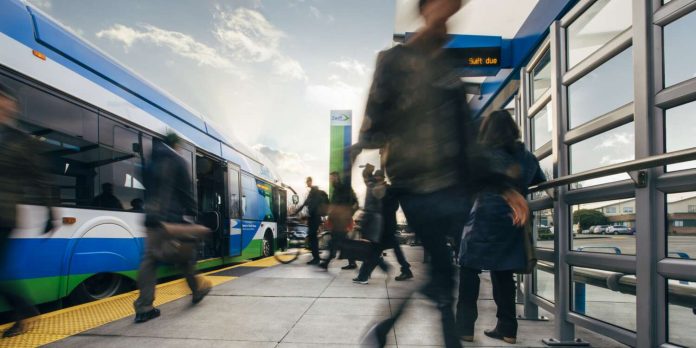
The Swift Orange Line debuted in March; the BRT route will connect to Lynnwood Link light rail in September.
On March 30, Community Transit launched service on its Swift Orange Line, the third bus rapid transit (BRT) line in Snohomish County. At the opening ceremony, State Sen. Marko Liias (D-21, Mukilteo) was in attendance. “I joked at the ribbon cutting that we’re going to keep funding swift until they run out of colors,” Liias said.
The new 11-mile line will provide one of Snohomish County’s primary connections to Sound Transit’s new Lynnwood Link light rail extension when it opens on August 30.
The new line and the opening of Lynnwood’s Link station are all part of a major restructuring of Community’s Transit’s entire network, says Chris Simmons, Community Transit’s transit integration manager. “At the end of the day, 50% of our service, in some way, shape, or form is going to be in touch with [Lynnwood] City Center Station,” Simmons said. “So whether you’re trying to transfer across south Snohomish County, or bus to a rail transfer, Lynnwood City Center Station is going to be the epicenter of the Snohomish County universe for at least the next 20 years.”
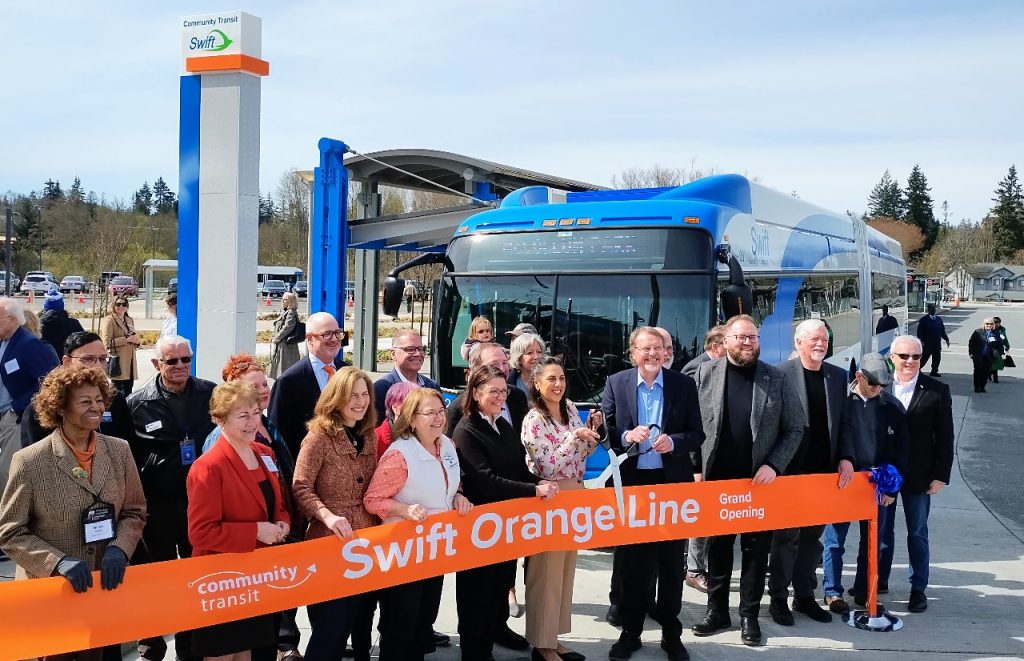
Also linking to the existing Blue and Green Swift lines, the new east-west Orange Swift Line connects Edmond College, Lynnwood Transit Center, Alderwood Mall, 164th Street SW, and McCollum Park. Buses are scheduled to arrive every 10 minutes on weekdays, and every 15 – 20 minutes during early mornings, evenings and weekends. Like the Green and Blue Line, stations have high curbs for easy access, the ability to tap ORCA cards before entry, and digital kiosks with real-time arrival info. The goal is for all Swift line buses to arrive and depart each stop within 10 seconds. Dedicated bus lanes and signal light priority aim to keep things moving.
“Introducing the Swift Orange Line greatly expands the number of bus routes where service is frequent enough that riders don’t need to worry about tracking schedules,” said Community Transit CEO Ric Ilgenfritz.
Christopher Silveira, Community Transit’s bus rapid transit program manager, says that 10-minute headways mean that on average, riders will wait five minutes for a bus. “Or you can also always check your phone using transit apps or Google Maps or our website for getting that next bus information.”
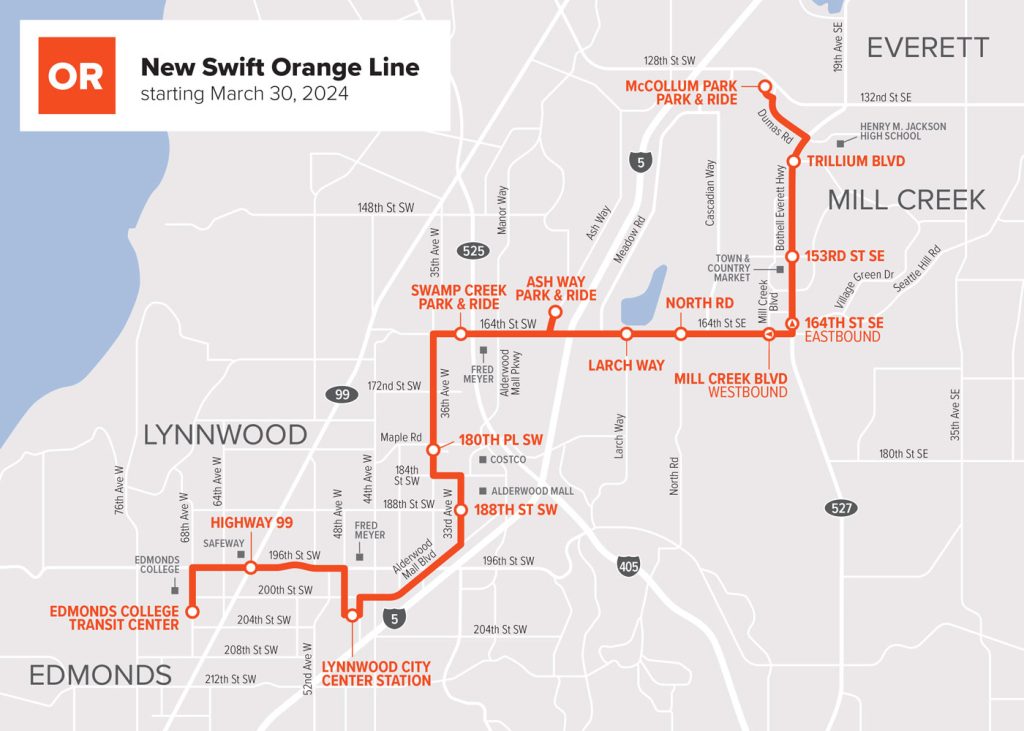
The Swift lines are a big change from when Liias was a teenager living in Snohomish county and attempting to take the bus to get around. “When I was a kid it was half hour or hourly service, so you had to really plan your transit commute,” he said. “My sister back in the day worked at the telephone customer service department and people would call in to CT [Community Transit] to plan their route – how do they get from here to there and make sure the timetables work? That’s a real barrier to a lot of folks adopting transit.”
As Chair of the Senate Transportation Committee, Liias has been instrumental in getting state funds dedicated to Snohomish County’s BRT lines. In the 2022 Move Ahead Washington transportation package he shepherded through the legislature, $10 million is dedicated toward a future Swift Gold Line between Everett and Arlington. That line, Silveira said, is still in the early planning stages and is expected to launch in 2030.
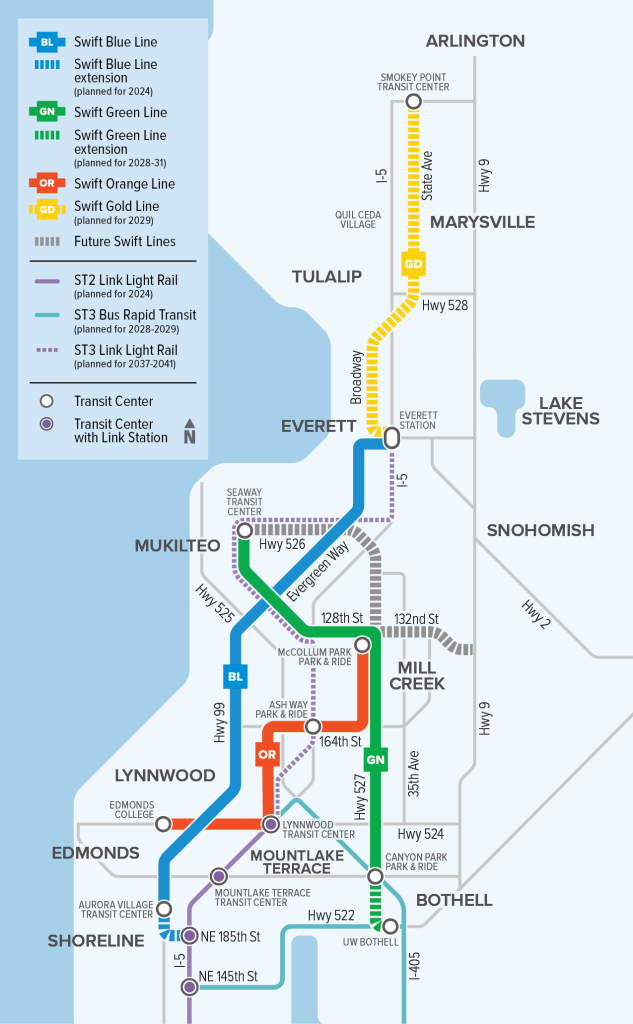
The $83 million Orange Line was built with $68 million in federal funds, including a $37.2 million Capital Investment grant and $6.5 million from the pandemic-era American Rescue Plan. The state chipped in $5 million from the 2015 Connecting Washington transportation package, while local sales tax provided about $10 million in matching funds.
Simmons says that while it usually takes about six months to get an accurate sense of ridership trends, he suspects this will soon be one of Community Transit’s most popular routes. “If this doesn’t rival the Blue Line – which is our highest ridership line in our system – my personal guess it’s actually going to be relatively close.”
The advocacy group Snohomish County Transportation Coalition — Snotrac, for short — was less hesitant to tout the ridership bump. “In the first month of Swift Orange Line service, there were 50,355 boardings!” SnoTrac wrote in its May newsletter. “And year-over-year, ridership was up 23% for the month of April.”
Simmons says the agency has been able to meet those 10 minute frequencies consistently with a full cadre of operators. “We revamped our entire recruitment process last year, knowing that not only was this day coming but for our ongoing service needs into the future,” Simmons said. “There was a very collaborative group process across the organization.”
In addition to signing bonuses, Community Transit has improved its training program with a focus on retention, Simmons said. The training period now lasts several weeks longer and includes proving each new recruit with a mentor. In addition, Community Transit’s latest budget includes 43 additional maintenance and operations positions, bringing the total to 641.
Simmons says that on September 14, two weeks after the Lynnwood Link station opens, Community Transit will have a significantly reworked bus service network. New local routes will get boosts because of elimination of the routes to downtown Seattle and Northgate, he said. “Instead, we are refocusing the bulk of our service hours on local services, with the remainder going into a new series of 900 numbered routes that we’re calling Express.”
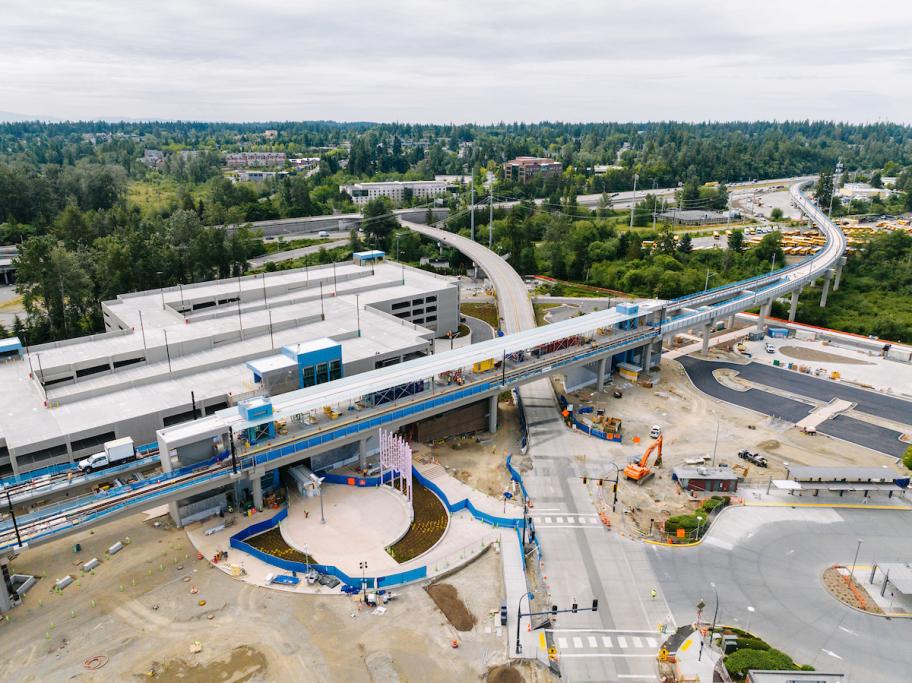
Some of the changes are already in place and have been in the works for several years. New local bus routes include the 102 (Edmonds-Lynnwood), 114 (Aurora Village-Lynnwood), and 166 (Edmonds-Silver Firs). Routes 115, 116, and 196 have been replaced by new routes.
It’s all part of a major revamp that will roll out over the next two years, Simmons says. “This is really the first step in our 2024 and Beyond package, where we’re undertaking the largest service restructure that the agency has had, frankly, since it started.”
Some of the new express routes include the 903 linking Lake Stevens and Lynwood City Center; the 904 connecting Marysville to Lynnwood City Center; and the 905, an all-day link between Stanwood and Lynwood City Center. Simmons says Community Transit is also working to better time buses between the Edmonds Ferry Terminal and Mountlake Terrace Transit Center (which will soon include a Link station on the new extension to Lynnwood. In addition, in 2025 or 2026, the 424 line will be converted into the 908, with service from Lynnwood City Center to downtown Bellevue.
Community Transit will also integrate its Zip Alderwood shuttle, a new on-demand service to the Alderwood Mall area that debuted in 2022, into the new Lynnwood City Center Station for light rail connections.
In addition, the Swift Blue Line, in time for the August opening of the Lynnwood extension of Sound Transit’s 1 Line, will get an extension along Meridian Avenue and 185th to connect it with the new Shoreline North/185th Link station. Simmons says Community Transit is also looking to extend the Swift Green Line to downtown Bothell and UW Bothell/Cascadia College, as well as a link to Sound Transit’s Stride S3 BRT line. That’s expected sometime late in this decade, as early as 2028.
Service on most of these lines, Simmons said, have been restructured to better accommodate new work patterns and broader demand for service outside of traditional commute times. “Rather than the very peak period-focused, very infrequent service, we’re now creating these all day, bidirectional connections,” Simmons said. “Which means that you’ll be able to get from McCollum Park to Lynnwood downtown and to the University of Washington – and back – without having to do it at the usual commute times.”
For Liias, an avid transit fan, all this is a welcome change from the days when if you missed a bus in Snohomish county, you’d be an hour late to work.
“This is really shifting to that paradigm of service on demand,” Liias said. “You show up, you wait a few minutes, that connection is there and it takes you to light rail, which is on the same model. You don’t have to think about what Link train you’re going to take, you just show up there and wait for the next one… It’s building a culture that transit is there at our convenience, not us being there at the convenience of when the bus is ready for us.”

Andrew Engelson
Andrew Engelson is an award-winning freelance journalist and editor with over 20 years of experience. Most recently serving as News Director/Deputy Assistant at the South Seattle Emerald, Andrew was also the founder and editor of Cascadia Magazine. His journalism, essays, and writing have appeared in the South Seattle Emerald, The Stranger, Crosscut, Real Change, Seattle Weekly, the Seattle Post-Intelligencer, the Seattle Times, Washington Trails, and many other publications. He’s passionate about narrative journalism on a range of topics, including the environment, climate change, social justice, arts, culture, and science. He’s the winner of several first place awards from the Western Washington Chapter of the Society of Professional Journalists.
